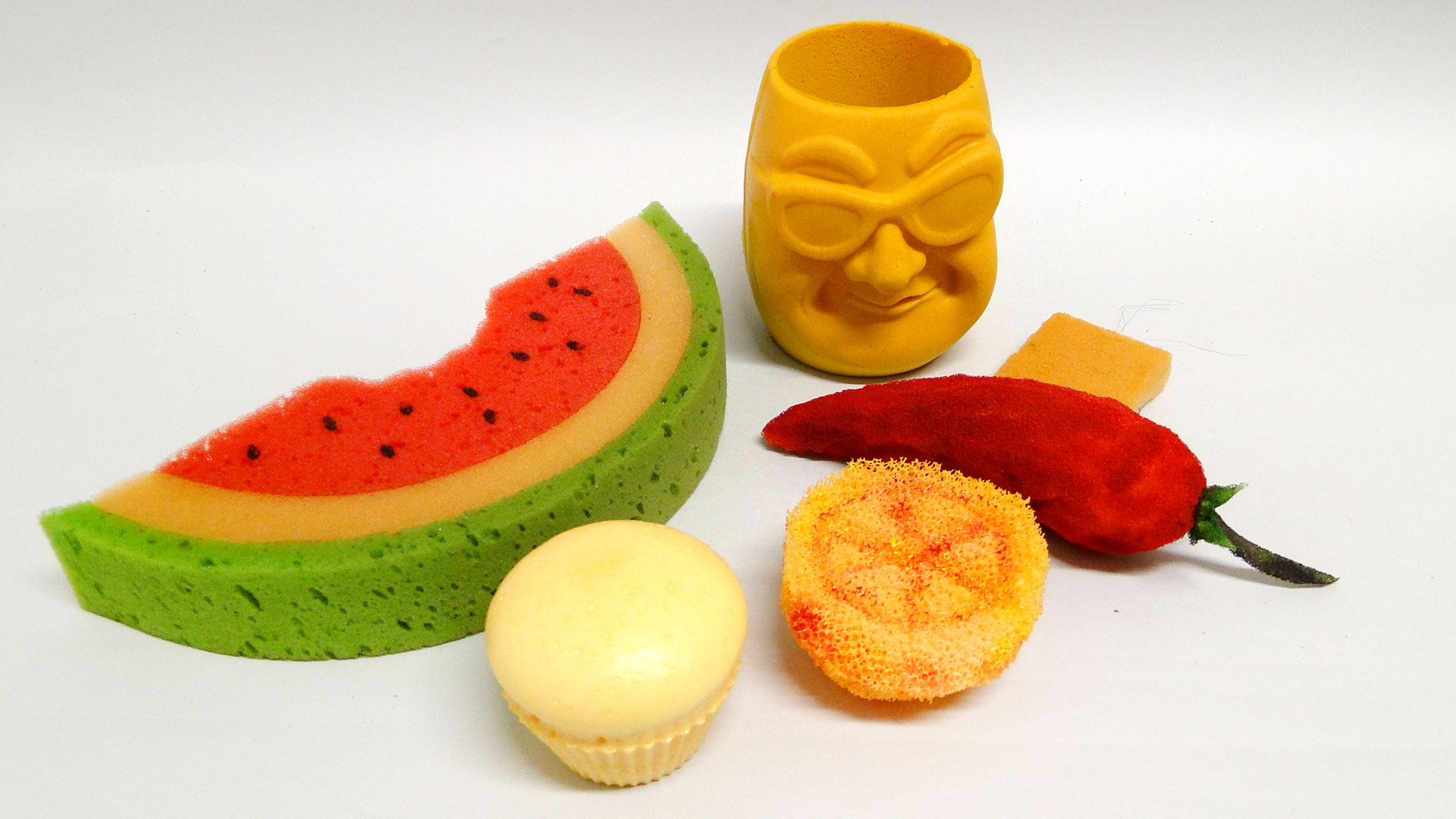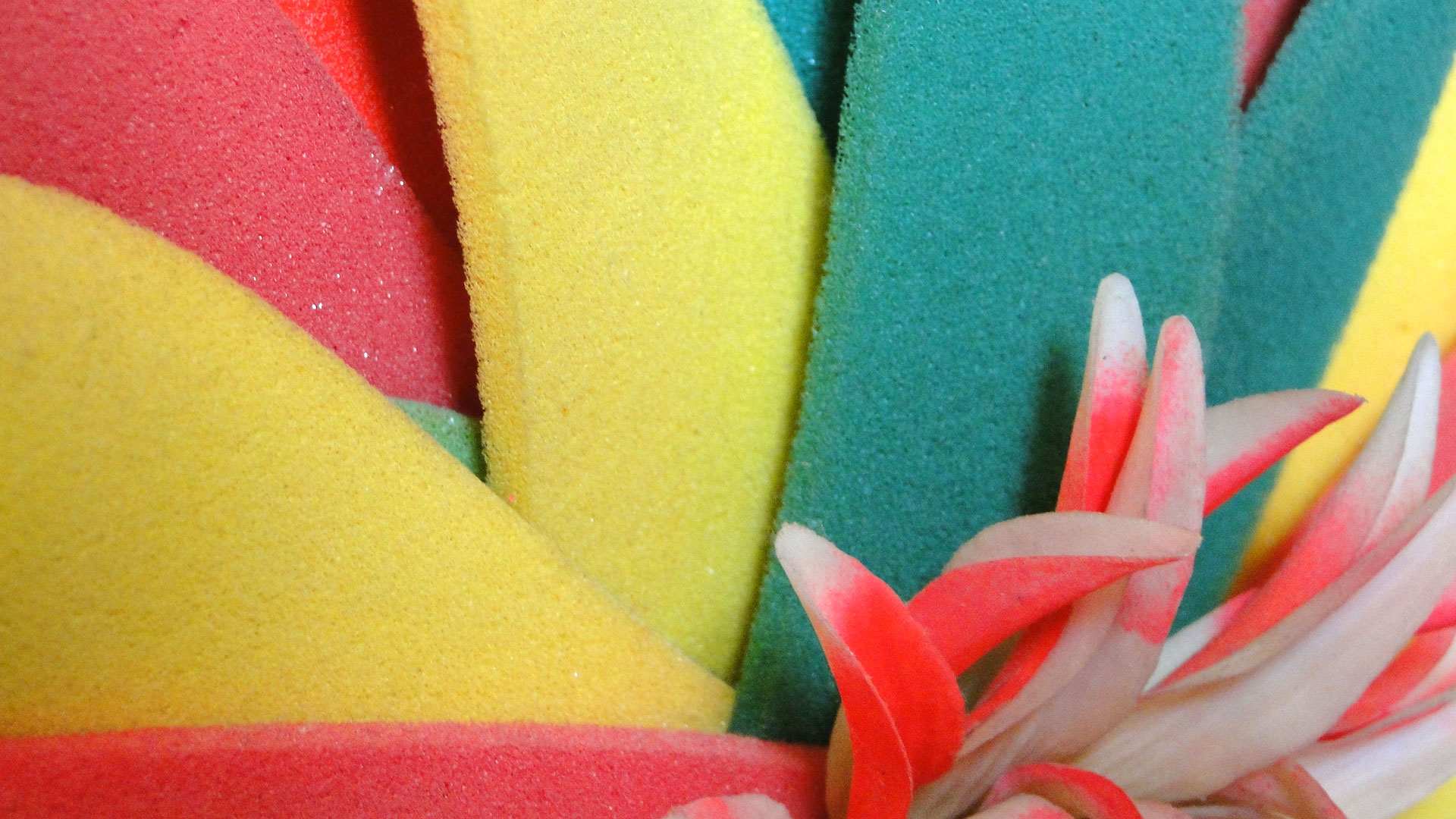Plastics
Soft polyurethane ether (PUR ether soft)
General information
Description
Polyurethanes come in various types and forms. Best known and most produced is PUR foam. Foams can be hard (insulation foam from spray can) or soft (mattresses). Soft PUR foam exists in an ester and an ether variety. Their degradation differs; esters become tacky and lose their flexibility, ethers will crumble after some time.History
The first polyurethanes were developed in 1937. Around 1954 commercial production of soft PUR foam started.Production, Application, Appearance
In the factory soft PUR ether foam is produced as sheets or blocks. Artists can make their own soft PUR foam by mixing the two components with a blowing agent. Soft PUR ether foam is used for many applications that require soft foam, for example sponges, scourers, and mattresses.Properties
Material properties
ThermosetDensity: 1.1-1.25 g/cm3; foam: ~0.015-0.13 g/cm3
Melting point: 141-157°C
Glass transition temperature: -60 to -19°C
Identification properties
Cell structure (foam): openSmell: can have a sweet chemical smell
Touch: no characteristic touch
Sound: no characteristic sound
UV-radiation (when clear): not applicable
Polarizing filters (when clear): not applicable
Degradation
Process
Photo-oxidation.Details
PUR is considered a problem plastic. Especially the soft foams can degrade rapidly and cause problems. Due to the open cell structure degradation occurs not only on the surface but in the core as well. A protective layer applied to the surface can slow down degradation to some extent.Symptoms
Discolouration; loss of mechanical properties resulting in tears and fractures; crumbling; loss of elasticity.Susceptibility
UV-radiation: HighLight: High
Oxygen/Ozone: Medium
Temp: Low
RH: Medium
Preventive conservation
Recommendations
UV-RADIATION: keep below 10 µW/lm Exclude UV with filters or no-UV light sourceLIGHT: 1 slight change in approx. 1 Mlx.h Limit light dose by reducing intensity and exposure time
OXYGEN / OZONE: lower temperature slows down oxidation
TEMP: common indoor conditions 10-30°C
RH: common museum conditions 40-60% RH fluctuations: setpoint ±10% or ±5% when allowing seasonal fluctations between 35-65%




